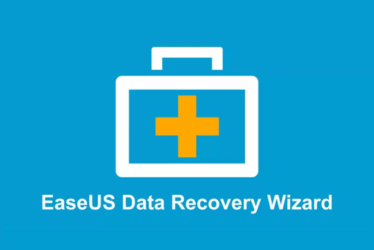Advertisements
How to Recover Deleted Photos: Complete Guide to Restoring Your Memories
Did you delete your photos by mistake?
Don't worry, recover deleted photos It is possible, and in most cases, easier than you imagine.
In this article, I'll show you the most effective methods for bringing back to life those images you thought were lost forever.
What Happens When You Delete a Photo?
When you delete a photo from your device, it doesn't disappear completely.
In fact, the system marks the space occupied by that image as "available," but the data remains there until it is overwritten with new information.
Advertisements
This means that if you act quickly, you can recover deleted photos without complications.
Methods to Recover Deleted Photos
- From the Device Recycle Bin
Most operating systems include a Recycle Bin or Recently Deleted:
- Android: In Google Photos, images are stored for 30 days before being permanently deleted. Just go to "Trash" and select "Restore."
- iOS: Deleted photos are stored in "Recently Deleted" for 30 days. You can access them from the Photos app and easily restore them.
- Windows and Mac: If you deleted a photo on your computer, check your Recycle Bin or Trash. It will stay there until you empty it manually.
- Using Cloud Backups
If you sync your photos with cloud services like Google Photos, iCloud or Dropbox, there's a good chance your images are still there, even if you deleted them from your device.
- In Google Photos, you can access it from any device, go to “Trash” and restore the images.
- In iCloud, you just need to log in to your account, go to “Photos” and check “Recently Deleted.”
- In Dropbox, check the deleted files section, as they are kept for 30 days before being permanently deleted.
- Apps to Recover Deleted Photos
If you can't find your photos in the trash or in the cloud, there are tools that can help you recover those memories:
- DiskDigger (Android): Allows you to scan internal memory and SD cards to find deleted images.
- Dr.Fone (iOS and Android): Recover deleted data from mobile devices, even after formatting.
- Recuva (Windows): Free software to restore files on computers, even after emptying the Recycle Bin.
Tips to Increase Your Chances of Success
- Avoid using the device: Each new photo or app could overwrite the data of deleted images.
- Activate cloud synchronization: This way you will have an automatic backup of all your photos.
- Make regular backups: A good habit that can save you in the future.
Is it possible to recover long-deleted photos?
If it's been weeks or months since you deleted the photos, the odds decrease, but there are still options.
Some advanced programs perform a deep scan looking for file fragments still in memory.
Recommended programs:
- EaseUS Data Recovery Wizard: Ideal for recovering photos from hard drives and USB drives.
- PhotoRec: Free software specialized in recovering images and documents in multiple formats.
- R-Studio: Perfect for deep scans on formatted or damaged drives.
How to Prevent Photo Loss in the Future
- Constant synchronization with cloud services.
- Automatic backups to external drives.
- Avoid formatting without first checking if the photos are backed up.
- Use quality SD cards to reduce the risk of errors.
Methods to Recover Deleted Photos
- From the Device Recycle Bin
Most operating systems include a recycle bin or a section called "Recently Deleted":
- Android: In Google Photos, deleted images are stored for 30 days before they disappear permanently. To recover them, simply open Google Photos, go to "Trash," select the photos you want to restore, and tap "Restore."
- iOS: On Apple devices, deleted photos are stored in "Recently Deleted" for a period of 30 days. To restore them, simply open the Photos app, go to the "Recently Deleted" album, select the images, and tap "Recover."
- Windows and Mac: If you deleted a photo on your computer, check your Recycle Bin (Windows) or Trash (Mac). The files remain there until you manually empty them, so you may be able to easily find and restore them.
- Using Cloud Backups
If you sync your photos with cloud services like Google Photos, iCloud or Dropbox, there's a good chance your images are still there, even if you deleted them from your device.
- In Google PhotosImages remain in the trash for 30 days. You can access the trash from any device, go to the trash, and restore deleted photos.
- In iCloudPhotos are stored in "Recently Deleted" for 30 days. Simply log in to your account, go to "Photos," and check that folder to recover them.
- In Dropbox, deleted images are saved in the deleted files section for 30 days before being permanently deleted.
- Apps to Recover Deleted Photos
If you can't find your photos in the trash or the cloud, there are specialized tools that can help you recover those memories:
- DiskDigger (Android): This app allows you to scan internal memory and SD cards to find deleted photos, even after formatting.
- Dr.Fone (iOS and Android): A very popular software for recovering deleted data from mobile devices. It offers a simple interface and allows you to recover lost images, videos, and other files.

Dr.Fone Data Recovery
- Recuva (Windows): A free program that allows you to restore deleted files from your computer, even after emptying the Recycle Bin. It's easy to use and quite effective.
Tips to Increase Your Chances of Success
- Avoid using the device:
If you realize you've accidentally deleted a photo, it's best to stop using your device immediately. Each new photo, app, or file you save could overwrite the space where that image was stored, making it difficult or even impossible to recover. - Activate cloud synchronization:
Services such as Google Photos, iCloud and Dropbox Allows you to automatically back up all your photos. Enabling this option ensures that even if you delete an image from your device, it remains available in the cloud for retrieval at any time. - Make regular backups:
A good habit to protect your memories is to make regular backups. You can use external drives, USB flash drives, or even cloud services to save all your photos and avoid irreparable losses. - Avoid unverified apps:
If you decide to use photo recovery software, make sure it's reliable and highly rated. Some malicious tools can compromise your data security or even damage your device's memory. - Disable the “Secure Erase” option:
Some operating systems have a "secure erase" option enabled, which overwrites free space on the device to prevent data recovery. If this feature is enabled, the likelihood of recovering photos is significantly reduced.
Is it possible to recover long-deleted photos?
If it's been weeks or even months since you deleted the photos,
The chances of recovering them decrease, but they don't disappear completely. For these cases, there are advanced programs capable of performing a deep scan in search of file fragments still present in memory.
Some of the best tools for this type of recovery are:
- EaseUS Data Recovery Wizard: Robust software that allows you to recover photos, videos, and documents from hard drives, USB drives, and SD cards.

EaseUS Data Recovery Wizard
- PhotoRec: A free and open-source program specialized in image and document recovery. It supports a wide variety of formats and works on Windows, Mac, and Linux.
- R-Studio: An advanced option that allows you to scan damaged, formatted, or even bad disks to find deleted files.
Ready to recover those deleted photos?
Don't let a mistake take away your most precious memories. Apply these methods and enjoy those special images again.
Would you like to review it to further adjust the SEO and make the text more optimized?